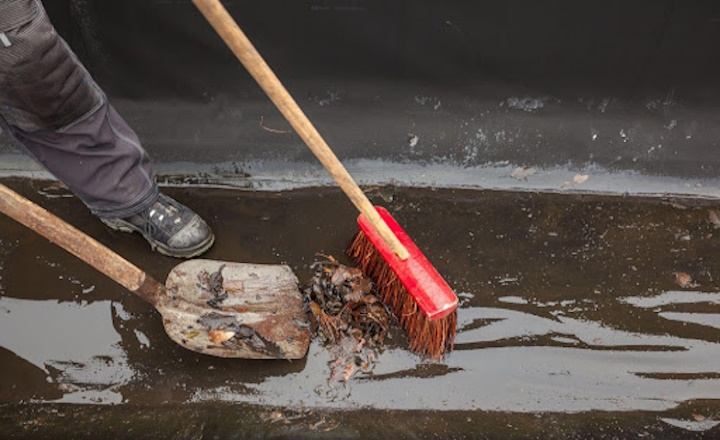
Maintaining a functional drainage system is crucial to ensure a smooth flow of water and waste from your property. When outside drains become blocked, they can lead to a host of problems, including water damage, foul smells, and health hazards. Early detection of blockages is essential to prevent severe damage and costly repairs. This article aims to help readers identify common signs of a blocked outside drain, offering practical steps for early detection and management.
Slow Drainage
One of the most noticeable indicators of a blocked outside drain is slow drainage. When water takes longer than usual to drain away, it often signifies a partial blockage in the drainage system. This can impact daily activities, such as washing dishes, taking showers, or using the bathroom, and may pose health risks due to standing water. Slow drainage is typically observed in sinks, bathtubs, showers, and outdoor drains.
If slow drainage is detected, it's important to respond promptly. Start by clearing any visible debris around the affected drain. Using a plunger or a drain snake can sometimes dislodge minor blockages. However, if the problem persists, it might require more intensive cleaning or professional assistance.
Gurgling Sounds
Gurgling sounds in the drain system are not just annoying; they are often a sign of a blockage. These sounds occur when air is trapped in the pipes due to an obstruction, causing the water to struggle as it drains away. Gurgling sounds can be heard in various situations, such as when flushing the toilet, draining a sink, or running an outdoor tap.
The persistence of gurgling noises can indicate a more severe blockage that may require immediate attention. To address this, check the vent pipes for blockages, as they can sometimes be the source of trapped air. If the sounds continue, it could mean that the blockage is deep within the drainage system, necessitating the expertise of a professional plumber.
Unpleasant Odours
Foul smells emanating from your drains are an early warning sign of a blockage. These odours are often caused by trapped food, waste, or other materials that start to decay within the pipes. Unpleasant smells are usually more pronounced near drains or outside near the main drainage pipe.
To minimise and investigate these odours, begin by conducting a thorough cleaning of your drains. Pour hot water mixed with baking soda and vinegar down the affected drains to break down any organic matter. Regularly cleaning the drains can help prevent the build-up of debris that causes these odours. If the smells persist, it might indicate a significant blockage that needs to be professionally addressed.
Water Overflow
Water overflow is an evident sign that there's a blockage in your drainage system. This can happen in various scenarios, such as after heavy rainfall when your drains cannot cope with the increased water flow. Specific areas to monitor for water overflow include driveways, gardens, and patios, where water can quickly accumulate.
Stagnant water poses numerous risks, including becoming a breeding ground for mosquitoes and creating hygiene issues. When water overflow is spotted, act immediately by clearing the surrounding area of any debris, ensuring that water can flow freely into the drain. If the problem doesn't resolve, the blockage may be more severe than anticipated and professional intervention may be necessary.
Visible Debris and Organic Matter
The presence of visible debris and organic matter around drains is a clear indicator of a potential blockage. Common types of debris include leaves, dirt, and waste. Seasonal factors, such as autumn leaves or heavy rains, can contribute to the accumulation of debris around outside drains.
Regular visual inspections of your drains can help in identifying blockages early on. Using tools like drain grates and gutter guards can prevent large debris from entering the drainage system. Additionally, maintaining the surrounding area by trimming trees and removing fallen leaves can help manage organic matter and reduce the risk of blockages.
Conclusion
Identifying key indicators of a blocked outside drain, such as slow drainage, gurgling sounds, unpleasant odours, water overflow, and visible debris, is essential for maintaining a functional drainage system. Regular monitoring and maintenance play a crucial role in preventing severe damage and costly repairs. If any of these issues are detected, addressing them promptly can help mitigate further problems. However, if the blockage persists despite initial steps, it may be necessary to seek professional assistance for unblocking outdoor drains, ensuring the drainage system is thoroughly cleared and functioning optimally.
By keeping an eye on these common indicators and taking preventive measures, homeowners can effectively manage their drainage systems. Remember, addressing the issue early can save considerable time, effort, and expense in the long run. For those facing persistent blockages, understanding the steps to unblock an outdoor drain can provide valuable insights and solutions.
| < Prev | Next > |
|---|





